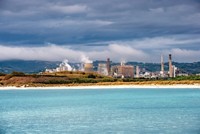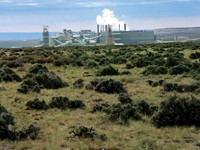Advertisement
Grab your lab coat. Let's get started
Welcome!
Welcome!
Create an account below to get 6 C&EN articles per month, receive newsletters and more - all free.
It seems this is your first time logging in online. Please enter the following information to continue.
As an ACS member you automatically get access to this site. All we need is few more details to create your reading experience.
Not you? Sign in with a different account.
Not you? Sign in with a different account.
ERROR 1
ERROR 1
ERROR 2
ERROR 2
ERROR 2
ERROR 2
ERROR 2
Password and Confirm password must match.
If you have an ACS member number, please enter it here so we can link this account to your membership. (optional)
ERROR 2
ACS values your privacy. By submitting your information, you are gaining access to C&EN and subscribing to our weekly newsletter. We use the information you provide to make your reading experience better, and we will never sell your data to third party members.
Inorganic Chemicals
Solvay claims breakthrough in soda ash production
Firm says new process will eliminate limestone emissions and help settle dispute with activist investor
by Vanessa Zainzinger, special to C&EN
September 8, 2022
| A version of this story appeared in
Volume 100, Issue 32

Solvay is piloting a soda ash production process that it claims will reduce CO2 emissions by half and eliminate limestone in its effluent, which currently contributes to the release of heavy metals into the sea.
The company has reached a settlement with the activist investor Bluebell Capital Partners that calls for it to roll out the new process across all of its soda ash plants by 2050. In parallel, Solvay will take shorter-term measures to reduce the amount of limestone released into the sea from its plant in Rosignano, Italy.
Solvay is the world’s largest producer of soda ash (sodium carbonate), which is used to make glass and other products. Solvay’s process uses brine and limestone as raw materials and ammonia as a catalyst.
The process creates large amounts of CO2 from the burning of fossil fuels and generates powdery limestone, which contains traces of heavy metals. The release from the Rosignano plant is so great that it has turned the local beaches an unnaturally white color.
The new process, which Solvay says is 30 years and $40 million in the making, will reduce CO2 emissions by using electricity as the energy source, says Philippe Kehren, president of Solvay’s soda ash and derivatives division. The company will scale up the process at its plant in Dombasle, France, where it has its R&D team, Kehren says.
In addition, the company says the process can reduce the amount of limestone in the effluent and eventually eliminate it completely. Solvay isn’t revealing details on how it will do so.
The settlement with Bluebell commits the company to a $15 million investment to more immediately reduce limestone residues in Rosignano. Tweaks will include making the limestone more granular and improving filtration, says Bluebell co-founder Giuseppe Bivona.
Bluebell says it is pleased with the settlement, which follows a 2-year campaign by the UK-based activist investor.
“You cannot expect a solution overnight. Doing a good thing for the environment has a cost and should be seen as an investment,” Bivona says. “I think the combination of short-term improvement of the process and transitioning to a new technology is really a very credible and very effective solution.”
Solvay’s Rosignano facility has been manufacturing soda ash since 1912. Last year, the company announced plans to put the soda ash business into a separate publicly traded entity, which will include the firm’s more energy-intensive businesses.




Join the conversation
Contact the reporter
Submit a Letter to the Editor for publication
Engage with us on Twitter